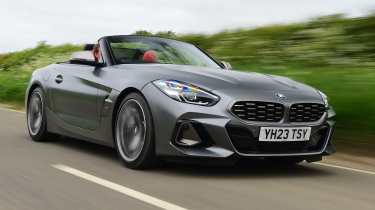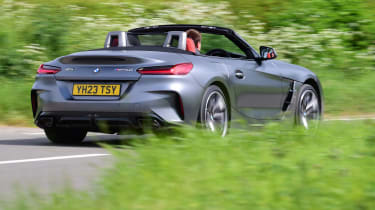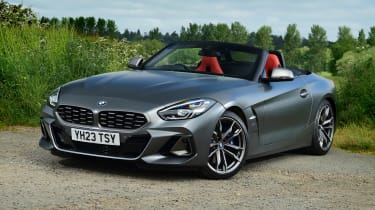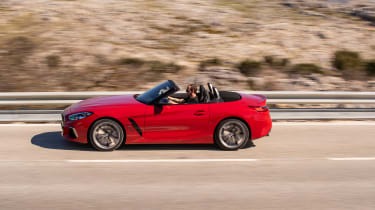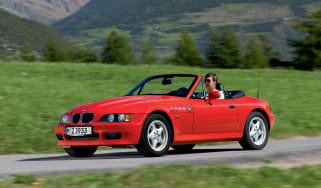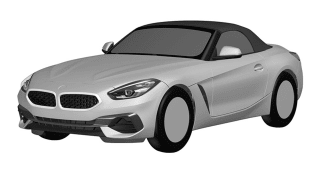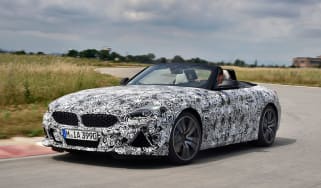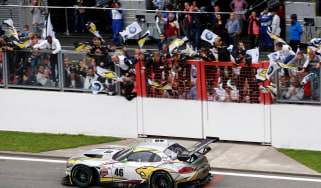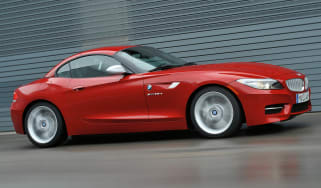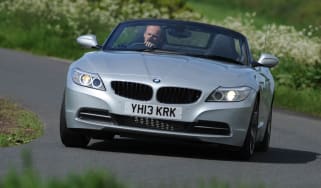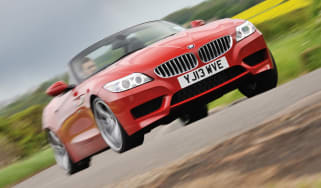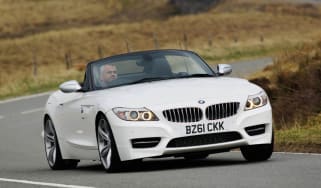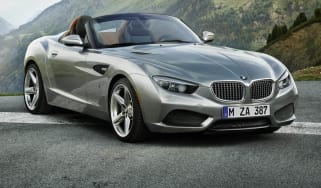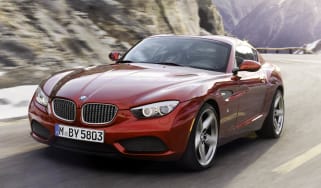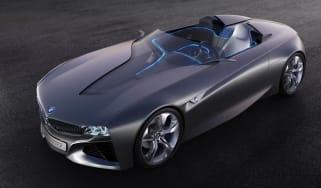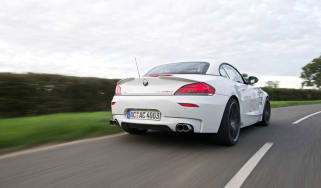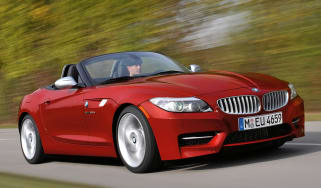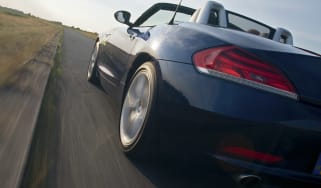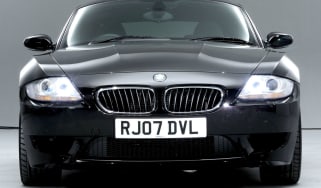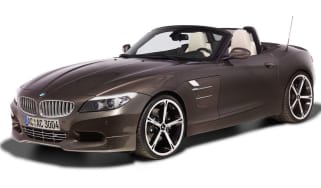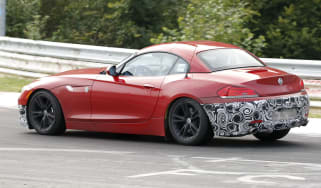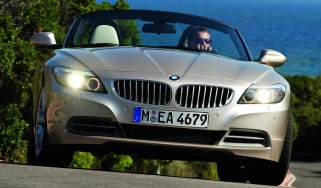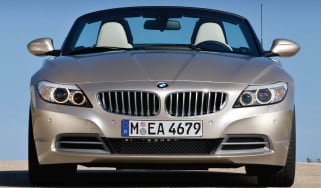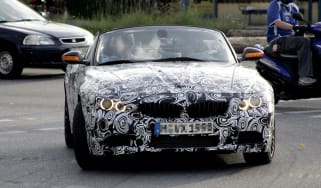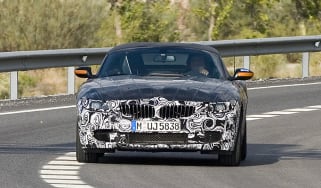BMW Z4 review – Munich's endearing roadster is no Boxster killer
Less dynamic than its Stuttgart rival, but still a rewarding and practical everyday machine
It’s not often that you’ll find a car from a mainstream manufacturer that’s in a class of its own, but that’s the very position BMW’s Z4 finds itself in. Of course, the latest Z4 (G29 in BMW speak) was a collaboration between BMW and Toyota, but given the Supra is a coupe and the Z4 can only be had with a soft-top they’re aimed at rather different audiences.
With the demise of Mercedes’s SLC and Audi’s TT Roadster the Z4 doesn’t have any direct rivals with the only similar machines being the Mazda MX-5 and the Porsche 718 Boxster – one’s a class down and the one’s a class up, certainly in terms of price point.
So where does that leave the Z4? Is it a sports car, or a budget soft-top GT? The answer it would seem is somewhere in between and as an everyday proposition it’s got a huge amount going for it In terms of usability, comfort and refinement. At first acquaintance the sporting side of its character is a little less obvious but the further you drive it the more you fall for its charms. It lacks the dynamism that makes the 718 Boxster such an enthralling machine but if you’re after a great allrounder it can be a very satisfying buy.
And the Z4 does have a lot going for it; good (if a little gawky from some angles) looks, a relatively entertaining drive, good engines offering a blend of performance and economy, and a host of standard equipment. It’s an undemanding car to drive, offering precise steering, huge levels of grip and a balanced chassis, but it’s somewhat one-dimensional, lacking any layers in its performance and delivery. It’s easy to drive fast and for the most part very composed when doing it, but you’d be having more fun in that MX-5 or Boxster.
More reviews
For 2023, it was given very lightly facelifted with minor visual and detail changes, but the Z4 in general remains a car that can leave you slightly cold on first encounter. The more time you spend with it, though, the more its strengths make themselves known. There is a place for cars like this; smaller and cheaper than a Mercedes SL, more easy-going than a Boxster.
It is more a cruiser than a sports car, but it is a sports car nonetheless. The joint-venture platform-sharing Toyota Supra is the more stirring driving experience of the two cars, but the Z4 M40i is still a solid drive with an enjoyable engine and well-calibrated electronics for its dampers and diff. The addition of the Handschalter, with its well-resolved manual transmission added focus, is a welcome one to crown the Z4 range at the eleventh hour.
BMW Z4: in detail
- Engine, gearbox and technical highlights – Both the 2-litre four-cylinder and 3-litre straight-six are relatively characterful, but no manual gearbox option is disappointing
- Performance and 0-62 time – even the 20i has better than expected pace, but it’s the M40i that’s by far and away the quickest of the three models with a 4.5sec 0-62mph time
- Ride and handling – Grip levels are impressive and the steering is precise, if lacking in feedback; Sport models offer a more compliant ride
- MPG and running costs – The Z4 shouldn’t cost the earth to run with impressive economy and emissions figures, but small fuel tank limits range
- Interior and tech – Seats and driving position are excellent, as is the level of technology, but the cabin lacks a sporting ambiance
- Design – A short wheelbase and wide track make the Z4 look a little gawky from some angles, but overall it’s an attractive machine
Prices, speics and rivals
When it first went on sale in the UK the 20i Sport was the cheapest Z4 with prices starting at £36,990 and rising to £49,050 for the M40i. The Sport model has since been dropped, such is the demand for M Sport models in the UK, and starting prices have suffered from some inflation and the 20i M Sport now starts at £45,830 while the M40i weighs in at £57,875.
Today, it’s almost in a class on its own. The Mercedes SLC has gone, as has the Audi TT Roadster. Maybe there’ll be a new era of electric two-seater convertibles in the mould of the MG Cyberster but until then the Porsche 718 Boxster is its closest on-paper rival. The Mazda MX-5 is more affordable (and fun) but less potent, less roomy and a car from the class below.
In reality, the Z4 M40i is never going to be as fun as a Boxster to drive (despite insiders stating that the Porsche was the Z4’s dynamic benchmark in development) but its strengths are in different areas. The M40i engine is more enjoyable company than the flat-four in base-level Boxsters (and you have to pay over £77k for a Boxster with a six-cylinder engine, the – admittedly brilliant – GTS 4.0).
| BMW Z4 20i | BMW Z4 M40i | BMW Z4 Handschalter | |
|---|---|---|---|
| Engine | In-line 4-cyl, 1998cc, turbocharged | In-line 6-cyl, 2998cc | In-line 6-cyl, 2998cc, turbocharged |
| Transmission | Eight-speed ZF automatic, rear-wheel drive | Eight-speed ZF automatic, rear-wheel drive | Six-speed manual, rear-wheel drive |
| Power | 194bhp @ 4500-6500rpm | 335bhp @ 5000-6500rpm | 335bhp @ 5000-6500rpm |
| Torque | 236lb ft @ 1450-4200rpm | 369lb ft @ 1600-4500rpm | 369lb ft @ 1600-4500rpm |
| Weight | 1450kg (136bhp/ton) | 1565kg (217bhp/ton) | 1550kg (220bhp/ton) |
| 0-62mph | 6.6sec | 4.5sec | 4.6sec |
| Top speed | 149mph | 155mph | 155mph (limited) |
| Basic price | £45,830 | £57,875 | £55,350 |
Used BMW Z4 (E85, 2002-2008; E89, 2009-2016)
The first generation of Z4, known as the E85, made its debut in 2002 and was a far more sporting proposition than the Z3 which it effectively replaced. Powered mainly by smooth six-cylinder units it was a decent stab at a sporting roadster, but always lost out in terms of feel and finesse when compared to Porsche’s Boxster.
Launched in 2009 the second Z4 was dubbed the E89 and was a far less focused machine – it was almost as if BMW was admitting it couldn’t beat the Boxster so it went chasing sales from Mercedes’ SLK. The E89 Z4 wasn’t a bad car by any means, but with a folding metal hard-top it was definitely aimed at the less sporting end of the market. The larger-engined models were very quick, but the chassis lacked finesse.
